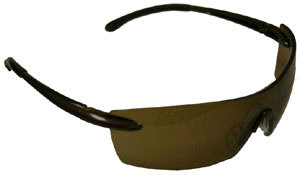Work-related eye injuries alone cost over $300 million dollars per year, in lost production time, worker compensation, and medical expenses.
OSHA says there are two main reasons:
(1) Workers weren’t wearing any eye protection. By some estimates, as many as three out of five injured workers weren’t wearing eye protection at the time of their accident.
(2) Workers were wearing the wrong kind of protection-the eyewear did not effectively protect against the specific hazard they faced.
Employers should know the risk factors facing their employees and properly train the workers to wear the appropriate eye protection prior to beginning their duties. If employees determine there are chances of eye injuries occurring that have not been addressed, they need to immediately notify their supervisor. Companies should strictly enforce their personal protective equipment policies.
Workers who are exposed to hazards such as molten metal, dust, dirt, wood chips, liquid chemical splashes, flying particles, gases or vapors, caustic liquids, infection-related materials, and light radiation must wear the appropriate eye and face protection. Improper or poor-fitting eyewear will not ensure safety from eye injury. If workers wear prescription lens, there are safety glasses that comfortably fit over the prescription glasses, or some safety eyewear can be made with the prescription in them. Contact lens wearers must wear eye/face protection when working in hazardous settings.
- Safety Spectacles – Impact resistant lenses; safety frames are usually made from metal or plastic. Side shields may be added for further protection.
- Chemical Safety Goggles – Completely covers and seals eye sockets.
- Welding Shields – Vulcanized fiber/fiberglass with filtered lens, protect from infrared burns, radiant light sparks, slag chips, and metal. Shades on the shields are numbered, and the welder must use the correct shade number according to tasks being done to secure eyes from harmful light radiation.
- Laser Safety Goggles –Protect from intense concentrations of laser light. These are special goggles.
- Face Shields – Sheets of transparent plastic, (sometimes polarized), which goes from eyebrows to below chin and across width of head. They do not absorb impacts; however, they work well with goggles or safety spectacles against impact hazards. Protect face from splashes, dust, sprays, etc.
One could lose their eyesight in a matter of seconds; therefore, it makes sense to take a little time to put on protective eyewear before entering the jobsite.
Source: OSHA
